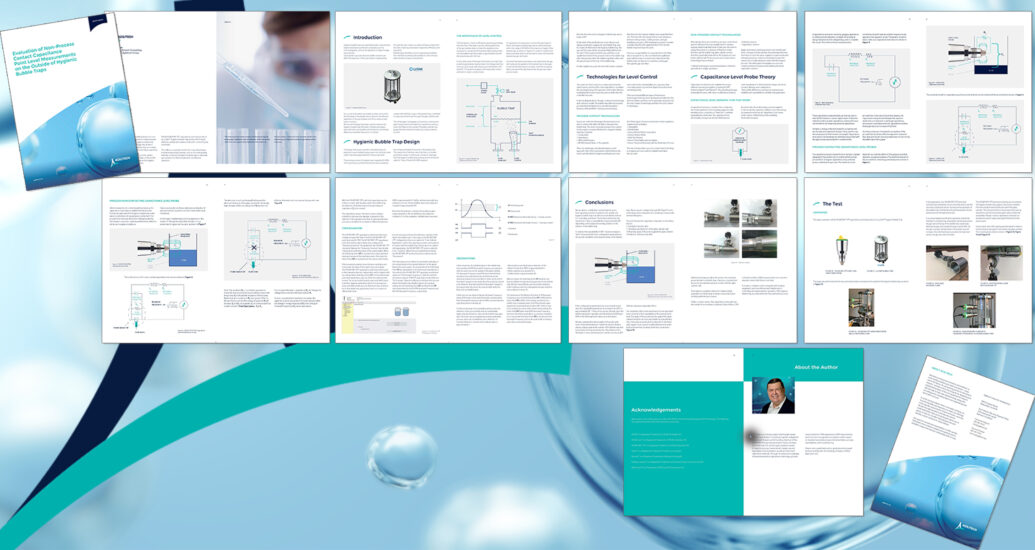Evaluation of Non-Process Contact Capacitance Point Level Measurements on the Outside of Hygienic Bubble Traps
Evaluating the Effectiveness of Non-Contacting Capacitance Level Probes in Hygienic Bubble Traps
Introduction
This case study investigates the performance and practicality of using a non-contacting capacitance level probe to accurately measure and control fluid levels in a hygienic bubble trap. This is a crucial component in downstream biopharmaceutical processes designed to separate gas bubbles from the fluid phase.
Project Overview
The primary aim was to evaluate the effectiveness of a capacitance point-level probe mounted externally on the bubble trap, thus eliminating the need for certain regulatory requirements such as Clean in Place (CIP) and Sterilize in Place (SIP). The device under investigation was the VEGA VEGAPOINT 21® capacitance point-level probe.
Methodology
- Probe Installation: The VEGA VEGAPOINT 21® was mounted outside the bubble trap, allowing for non-contact measurements by penetrating the glass cylinder with an electric field.
- Target Equipment: Tests were conducted using an LJ Star® Hygienic Bubble Trap, with configuration parameters specifically tuned to achieve a repeatability accuracy of approximately 1/8".
- Measurement Technique: Capacitance level probes operate by gauging the capacitance concerning the dielectric constant of the target material and the applied voltage to complete the circuit.
- Dielectric Considerations: For accurate measurements, the dielectric constant of the process fluid needs to be significantly higher than that of air and the glass wall of the bubble trap.
Findings
- Efficiency and Control: The VEGA VEGAPOINT 21® proved to be an effective, reliable, and scalable solution for point-level control.
- Advantages of Non-Contact Measurement:
- Eliminates the need for regulatory CIP and SIP processes since the probe does not come into direct contact with the process fluid.
- The probe’s electric field can penetrate low dielectric solids like glass, facilitating accurate level measurement.
- Configurability and Integration: The probe was easy to configure and integrate with existing equipment, thus providing a seamless and efficient method for controlling and optimizing bubble trap operations.
Considerations for Optimal Performance
- Mounting Angle and Glass Wall Properties: The probe's mounting angle against the glass cylinder and the glass wall's thickness and dielectric properties significantly impact measurement repeatability.
- Dielectric Constant of Fluids: Ensuring that the process fluid has a substantially higher dielectric constant than air and the bubble trap glass wall is essential for accurate level detection.

Conclusion
The non-contacting capacitance level probe, particularly the VEGA VEGAPOINT 21®, demonstrated significant promise in improving the control and efficiency of hygienic bubble traps in biopharmaceutical processes. By circumventing direct fluid contact, the probe mitigates CIP and SIP requirements while maintaining reliable and precise level measurements, making it an advantageous tool for process optimization.

